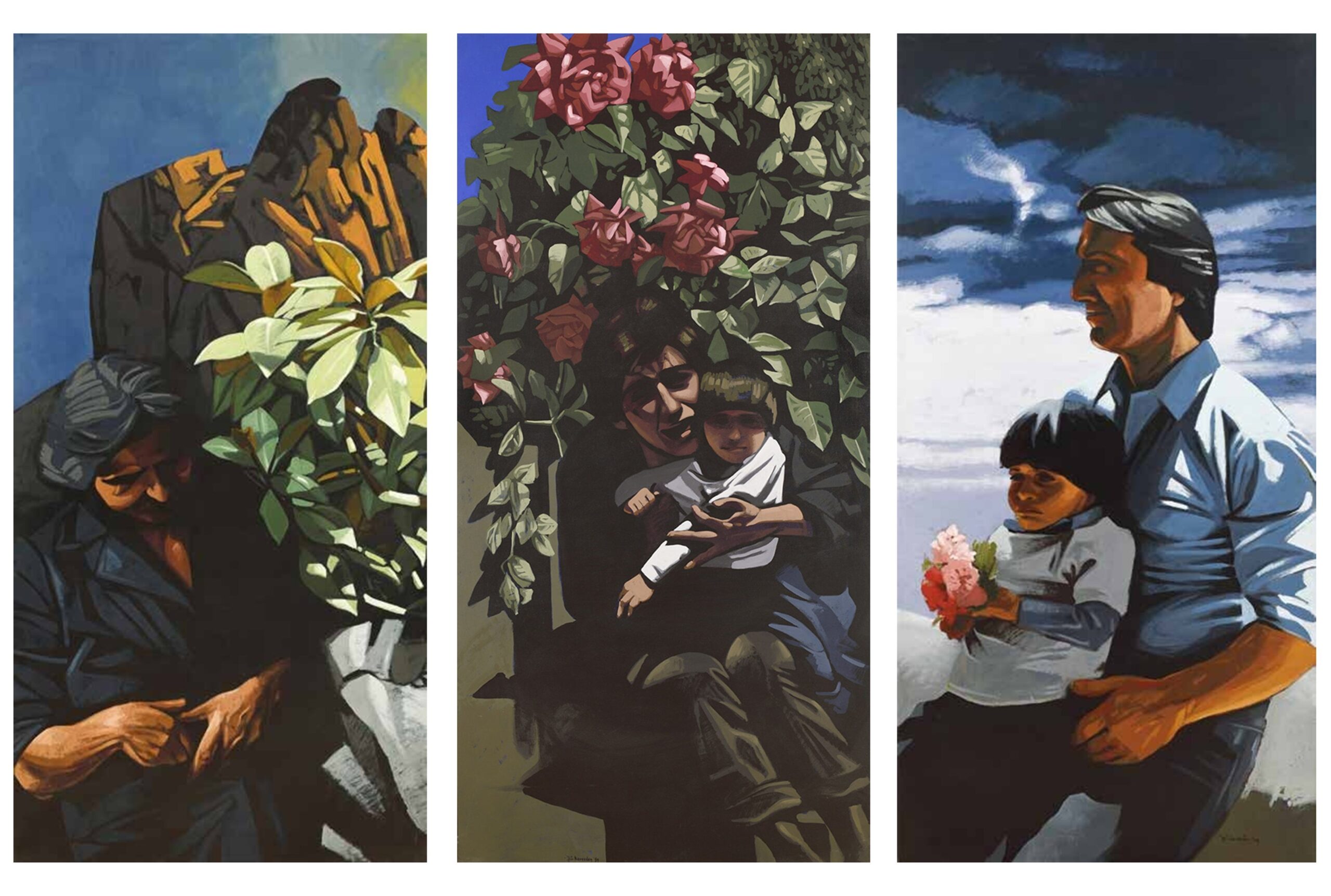The Influence of English Art (1980-1989)
From 1979 and afterwards, Kanakaki’s paintings became more personal. In the first half of the 1980s, she showed great interest in fabrics, interiors and surrealistic landscapes rendered with a cold, harsh realism, based on photographs. In 1995, the painter stated: “Until very recently, I believed that there was a smooth transition from the 1970s, where mainly – and for other colleagues of my generation – we expressed ourselves within the framework of photographic, critical, social realism, until we moved on to more expressionistic styles. In retrospect, I realized that the transition was not at all ‘smooth’. In the mid-1980s, when I was in England, there was a moment when I felt artistically isolated. Warhol was in fashion back then, as well as multiples, minimalism, conceptualism, etc. The artistic world was ‘boiling’. Those Greeks who were there didn’t know what was going on. We destroyed the good foundations we had set in Greece for the sake of a promising career. Without haste, we surrendered to time and wherever it leaded us. That is why, perhaps, me at least, didn’t realize the rupture immediately. I was absent from the Greek art scene for a long time without being able to integrate into the English, French, or German one”. (Interview with Dimitris Charitos: “Hero Kanakakis. ‘I am my painting…’”, Anti magazine, issue 573 [March 17, 1995], p. 52).
By the end of the decade Kanakakis took a distance from realism towards a freer, expressionistic style, influenced significantly by English art, particularly from the paintings of Lucian Freud, Francis Bacon, and others. These works mainly depicting nude women and children, were executed with warm colors and were characterized by intense drama. They were exhibited in a touring exhibition in Britain in 1989 (Aberdeen, Liverpool, London) and a little later, in March 1990, at the Aenaon International Centre of Fine Arts in Athens. The exhibition “Hero Kanakaki: Visual Environment” marked her return and her final settlement in Greece, after 16 years.




